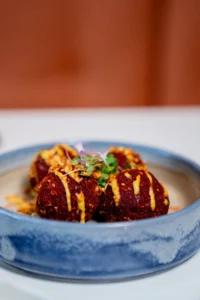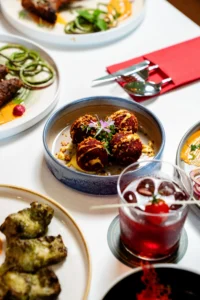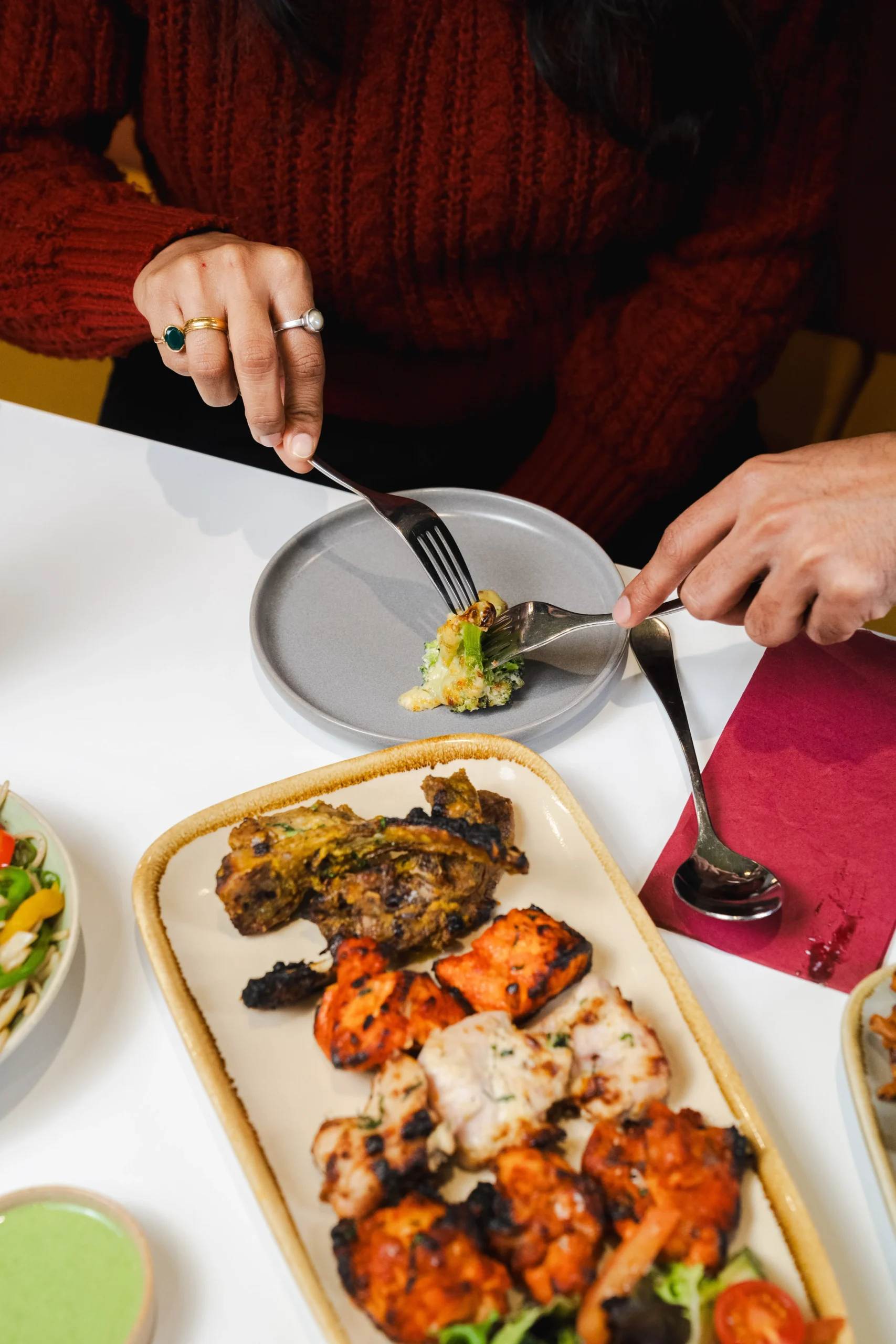Indian Flavour Profiles: Luxury in Layers of Taste and Tradition
Indian cuisine is a journey of taste, culture, and tradition. It weaves spices, textures, and aromas into every bite. Each dish tells a story, not just through ingredients, but through generations of careful cooking and balance. This complexity creates the rich tapestry of Indian flavour profiles, making the food both luxurious and comforting.
Let’s explore what makes Indian flavours so layered and unforgettable.
The Building Blocks of Indian Flavour
 Indian cooking relies on more than just spice. It uses a thoughtful blend of ingredients, preparation methods, and timing.
Indian cooking relies on more than just spice. It uses a thoughtful blend of ingredients, preparation methods, and timing.
Spice Doesn’t Mean Heat
Many assume Indian food is always spicy-hot. However, spices in India do much more than add heat. Cumin, coriander, turmeric, and cardamom offer depth, warmth, and fragrance. Each spice has a role. When layered correctly, they create harmony rather than fire.
The Power of the Tadka
Also called ‘tempering’, tadka is a key step. Hot oil is infused with spices like mustard seeds, curry leaves, or asafoetida. This step adds a punch of flavour and a finishing aroma. It’s small but mighty.
Sweet, Sour, Salty, Bitter, and Umami
Indian cuisine doesn’t shy away from using all five tastes. For example, tamarind brings tang. Additionally, jaggery or sugar adds sweetness. Meanwhile, salt enhances everything. In contrast, fenugreek brings bitterness. Moreover, tomatoes and aged spices often deliver umami. As a result, they balance beautifully.
Regional Layers: North to South
India’s geography affects its food. Every region has a distinct taste profile, shaped by climate, history, and local produce.
Northern Comforts
In the north, you’ll find rich, creamy dishes like butter chicken, dal makhani, and paneer tikka. These dishes use dairy, dried fruits, and spices like cinnamon and cloves. The result? Hearty and indulgent meals.
Southern Heat and Tang
Southern India leans towards rice, coconut, and tamarind. Dishes such as sambar or Chettinad curry burst with bold spices and sour notes. Mustard seeds and curry leaves often lead the flavour dance.
Eastern Delights
In Bengal, mustard oil, fish, and poppy seeds dominate. The food has a subtle sharpness, often balanced with sweetness. Think of dishes like shorshe ilish or mishti doi – bold yet balanced.
Western Variety
The west, including Gujarat, Rajasthan, and Maharashtra, offers immense variety. Rajasthani food is dry and spice-forward, while Gujarati cuisine adds sweetness even to savoury dishes. Maharashtra strikes a middle ground with dishes like vada pav and poha.
Cooking Techniques That Add Depth
 Techniques matter as much as ingredients. Indian cooks use layers of cooking to build flavour.
Techniques matter as much as ingredients. Indian cooks use layers of cooking to build flavour.
Slow Cooking and Simmering
Many dishes simmer for hours. This allows flavours to develop and mix slowly. Curries become thicker, spices mellow out, and everything tastes better the next day.
Roasting and Grinding Spices
Freshly ground spices taste stronger. Indian kitchens often roast whole spices before grinding. This step unlocks oils and intensifies aroma.
Fermentation and Pickling
Fermented foods like dosa batter or idli add sourness and lightness. Pickles add punchy bursts of spice, salt, and sourness. These sides often turn a simple meal into a flavour explosion.
The Role of Freshness and Seasonality
Indian cuisine, above all, celebrates local and seasonal produce. For instance, fresh herbs like coriander and mint add brightness. Likewise, mangoes in season become chutneys, pickles, and desserts. Consequently, this link to the land adds a natural, fresh note to every meal.
Luxury Through Complexity
Luxury doesn’t always mean expensive. In Indian food, luxury lies in the layers – time, care, and tradition.
Every Dish is a Story
From a simple khichdi to an elaborate biryani, each dish holds a story. Moreover, the way spices are added, the order of ingredients, and the final touch all carry meaning.
Texture Adds Interest
Soft dal, crispy papad, crunchy onions – Indian meals love texture. Mixing them makes each bite exciting. It’s not just about flavour, but mouthfeel too.
Celebration of Contrast
Indian food embraces contrast. Hot and cold. Sweet and sour. Creamy and spicy. These opposites work together, never against each other.
Final Thoughts: Indian Flavour Profiles
Indian flavour profiles are not random. They follow rules, traditions, and careful taste balance. The complexity is deliberate. Every layer adds luxury, not just in richness, but in experience.
So, the next time you savour an Indian meal, take a moment. Notice the warm cumin, the tangy tamarind, the sweet jaggery, and the fresh coriander. Together, they create a dish that is far more than food – it’s a layered expression of culture, care, and craft.


